Élisabeth Louise Vigée Le Brun’s Works to be sold at Sotheby's New York, 31 January 2024
NEW YORK - Élisabeth Louise Vigée Le Brun was one of the most highly regarded portraitists of 18th century France and one of the most successful and internationally renowned female artists of that century. Though she is more famous for her work in oil, Vigée Le Brun first trained as a pastellist under the tutelage of her father, the artist Louis Vigée (1715–1767). As her career progressed she increasingly turned to the presumably more lucrative activity of painting, though she did return to pastel throughout her life, both in her commissioned work and for herself, as in the magnificent Self-Portrait in Traveling Costume (Lot 11).
Lot 11. Élisabeth Louise Vigée Le Brun (Paris 1755 - 1842), Self-Portrait in Traveling Costume. Pastel, bears inscription in black ink on the original backing: 28. novbre 1816 / Légué par Mr Menageot / à Mme Nigris-- / Ce dessin représente Mme Le Brun / il est fait par elle-même; 480 by 375 mm (sight size). Estimate: 700,000 - 1,000,000 USD. Lot Sold 3,085,000 USD. © Sotheby's 2024
Provenance: Presented by the artist in Rome to François Guillaume Ménageot (1744-1816);
By bequest to Madame Gaétan Bernard Nigris, née Jeanne Louise “Julie” Le Brun (1780-1819);
Presumably bequeathed by her to her cousin, Madame Justin Tripier Le Franc, née Eugénie Le Brun (1797-1872);
Thence by inheritance to her son, Charles- Auguste Tripier Le Franc (1830-1892);
By whom possibly bequested in his will of 4 April 1889 to one of the three executors of his estate, Pierre-Marie-Auguste Langoit, Paris;
Or possibly by inheritance to Tripier Le Franc’s common-law wife, Françoise-Anne Cardinot;
Sale, Paris, Nouveau Drouot, 17 December 1983, lot 1;
Where acquired by the present collector.
Literature: Élisabeth Louise Vigée Le Brun, Mémoires d’une portraitiste (1755-1842), Paris, 1989, p. 90, illus.;
Élisabeth Louise Vigée Le Brun, Memoirs of Madame Vigée Le Brun, Lionel Strachey (trans.), New York 1989, p. 107, reproduced;
W. Wasserstein, "Portraits by a Lady" in Arts & Antiques (September 1989), p. 111, reproduced;
J. Baillio, “Vigée Le Brun pastelliste et son portrait de la duchesse de Guiche,” in L’Œil, June 1993, no. 452, pp. 22-23, reproduced p. 29;
A. Laing, 'French eighteenth-century drawings', Burlington Magazine, vol. 141, no. 1155 (1999), p. 378 and 380;
P. Rosenberg, 'Eighteenth-Century French Drawings in New York Collections', Master Drawings, vol. XXXVIII, no. 2 (2000), p. 187;
N. Jeffares, "Élisabeth-Louise Vigée Le Brun," Dictionary of Pastellists before 1800, London 2006, online edition [http://www.pastellists.com/Articles/VigeeLeBrun.pdf], accessed 31 May 2023, cat. no. J.76.105, reproduced;
G. Haroche-Bouzinac (ed.), "Élisabeth Louise Vigée Le Brun," in Souvenirs 1755-1842, Paris 2008, pp. 32-33, reproduced;
J. Baillio, “Une nouvelle édition des Souvenirs de Madame Vigée Le Brun 1755-1842,” in La Tribune de l’Art, 2009, reproduced fig. 3;
D. Wisner, 'French neo-classical artists and their collections', Journal of the History of Collections, vol. 24, no. 2 (2012), p. 234;
J. Baillio and X. Salmon, Élisabeth Louise Vigée Le Brun, exh. cat., Paris 2015, pp. 92-93, 346, cat. no. 4, reproduced;
J. Baillio, K. Baetjer, and P. Lang, Élisabeth Louise Vigée Le Brun, exh. cat., New York and Ottawa 2016, pp. 3, 138-139, 248, cat. no. 40, reproduced p. 138.
Exhibited: New York, Wildenstein, The Winds of Revolution, 1989, no. 47;
Los Angeles, Getty Museum, June 1998 (on loan);
New York, The Metropolitan Museum of Art, Eighteenth-Century French Drawings in New York Collections, 1999, no. 93;
New York, The Metropolitan Museum of Art, Pastel Portraits: Images of 18th-Century Europe, 2011, nos. 29;
Paris, Galeries Nationales du Grand Palais; New York, Metropolitan Museum of Art; Ottawa, National Gallery of Canada, Élisabeth Louise Vigée Le Brun, 2015-16, no. 4 (Paris) and no. 40 (New York and Ottawa).
Note: This sensitively rendered yet visually striking self-portrait by Élisabeth Louise Vigée Le Brun was executed by the artist shortly after she had, with her nine-year-old daughter and the child’s governess, fled revolutionary Paris for Italy in the autumn of 1789. The French Revolution is a period of extraordinarily well-documented European history, and this is not the context in which to further elaborate, however suffice it to say Mme Le Brun’s proximity to the Maison de la Reine and various members of Marie Antoinette’s close circle (see lots 7, 8 and 19) made her at one moment the quasi-official painter of the Ancien Régime and in the next breath a political enemy of France.
Though the upheaval of Vigée Le Brun’s exile from her homeland was undoubtedly a time of profound insecurity and melancholy for the artist, these pressures clearly did nothing to negate her artistic genius. Indeed, the present work can be counted as one of, if not, the finest and most important pastels in her oeuvre. Executed in pastel on gray paper the artist portrays herself looking all of twenty – she was in fact thirty-four years old at the time she produced it – as she dons the simple clothing of a traveler in the form of a dress with a wide collar and short cape (a type of carrick), whilst her curly chestnut hair is bound into a muslin kerchief knotted at the top. It has been noted by Mary Tavener Holmes that “the modesty of the costume…adds to the naturalism and feeling of vitality” an observation that when coupled with the technical handling of the medium, in which “the chalk is often left unblended, adding to the sense of freshness and youth”2 leaves the viewer simultaneously enthralled by the artists extraordinary artistic capacity as well as her legendary beauty.
With an artist as socially adept as Vigée Le Brun there can be little doubt that behind the technical accomplishments and aesthetic appeal of this pastel also lay a powerful political message for her detractors in France. Gone are the vestiges of extravagance or whimsy, traits which in much of her society and court portraits of women came to define her work as well as the era that was swept away by the Revolution, and were to be found in early self-portraits, such as Self-Portrait Wearing a Black Hat decorated with Cherry-Red Ribbons,3 and the Self-Portrait in a Straw Hat,4 as well as her numerous portrayals of Marie-Antoinette. Instead, in the words of Guégan “of the vanities of high society, she (Vigée Le Brun) has retained only the most elementary coquetry. Was there any better response than simplicity to the slanderous pamphlets targeting her on the eve of the Revolution?”.5
Now many hundreds of miles from Paris and the ongoing recriminations of the French Revolution, Vigée Le Brun needed to provide herself and her daughter with some semblance of stability. She achieved this in part through the execution of two of her most celebrated self-portraits, the present work as well as her splendid Self-Portrait,6 commissioned by the Uffizi authorities following the artists visit to Florence. In mid-November 1789, just over a month after her departure from Paris, Mme Le Brun arrived in Italy and whilst enroute to Rome received authorization to visit the Palazzo Pitti and the Galleria degli Uffizi, in Florence. There she was able to admire, amongst the many treasures, the collection of self-portraits first assembled by Prince Leopoldo de’ Medici from 1664 onward and was flattered when asked to add her own image to the prestigious assemblage (Fig.1). The Uffizi painting is an artistic tour de force and its initial reception was well documented by François-Guillaume Ménageot, the then Director of the Académie de France in Rome. According to Ménageot, “The painting Mme Le Brun has just finished is a complete success; with one voice, all of Rome is in awe of her talent and situates that portrait among the ranks of the most beautiful works”.7
Ménageot is an interesting figure to quote regarding the Uffizi painting as his role within the broader context of Vigée Le Brun’s arrival in Italy was highly important and multifaceted. Firstly, in his capacity as Director of the Académie de France in Rome he was able to provide Vigée Le Brun with an apartment at the Palazzo Mancini in which she both lived and worked. This gesture of support was in some ways a reversal of roles for Ménageot and Mme Le Brun as in Paris, before taking up his post in Rome, the former had rented an apartment in the Hôtel de Lubert, the townhouse owned by Vigée Le Brun and her husband. Secondly and of particular interest and relevance to the present work, Ménageot was, in fact, its first owner having been presented it, per the old inscription to the original backing, by the artist. There has been some speculation surrounding the intention of this gift, with Guégan alluding to the “temptation to muse about the meaning of this token of affection”8 particularly considering the sitters more youthful appearance. It seems likely, however, that the gift was made primarily out of gratitude for the way in which Ménageot supported Mme Le Brun and her family, upon her arrival in Rome. There can also be no doubt that there would have been little harm, as far as her artistic reputation was concerned, for the influential and well-connected Director of the Académie de France in Rome to be in possession of this virtuoso reminder, for any one in doubt, of what the artist was capable.
The appearance of this exquisite and rare work, presented for sale for the first time in over four decades, is a market defining moment for a work on paper by Vigée Le Brun. Its appearance comes some five years after the market for the artist’s work was redefined in these rooms by the sale of her monumental portrait of Muhammad Dervish Khan9 and a decade since the last work on paper of major significance, Vigée Le Brun’s black chalk and stump Self-Portrait in a Straw Hat with a Plume,10 appeared unexpectedly and with little fanfare at a small auction house in the suburbs of Paris. Although it is easy, on occasion, for hyperbole to muddy our understanding of the importance of an object there is little risk of overstating things in the case of Self Portrait in Traveling Costume. It’s appearance on the market presents both private and institutional collectors alike with a unique opportunity to compete for that most rare of things, a true masterpiece, created at arguably the most fascinating and life defining moments of the artist’s career, that maintains through its utterly exquisite condition every semblance of quality and nuance that Vigée Le Brun first instilled in it over 230 years ago.
1. J. Baillio and X. Salmon (eds.), Élisabeth Louise Vigée Le Brun, exhibition catalogue, Paris, Grand Palais, New York, Metropolitan Museum of Art, and Ottawa, Musée des Beaux-Arts du Canada, 2015-16, cat. no. 7
2. See New York, The Metropolitan Museum of Art, Eighteenth-Century French Drawings in New York Collections, New York 1999, p. 216
3. Baillio and Salmon, op. cit., p. 81, reproduced
4. Ibid., p. 11, reproduced
5. J. Baillio, K. Baetjer, and P. Lang, Élisabeth Louise Vigée Le Brun, exhibition catalogue, New York 2016, p. 139
6. Baillio and Salmon, op. cit., p. 143, reproduced
7. Correspondance des directeurs de l’Académie de France, vol. 15, p. 403, doc. 9065
8. Baillio and Salmon, op. cit., p. 139
9. J. Baillio and X. Salmon, Élisabeth Louise Vigée Le Brun, exhibition catalogue, Paris 2015, pp. 166-7, 352, cat. no. 53, reproduced p. 167; sale, New York, Sotheby’s, 30 January 2019, lot 38 ($7,185,900)
10. Baillio and Salmon, op. cit., p. 82, reproduced; Sale, Deuil-la-Barre, Hôtel des ventes de la Vallée de Montmorency, 11 March 2014, lot 16.
Vigée Le Brun was a precocious and talented artist from a young age; she succeeded in gaining entrance to the Académie de Saint-Luc at just nineteen, a remarkable accomplishment for a woman at the time. By the late 1770s Vigée Le Brun’s reputation as a portraitist had become well-established. In 1778 she was called to Versailles to paint a full-length portrait of the young Queen Marie Antoinette. The tremendous success of this portrait led to several royal commissions and the continued patronage of the Queen and her circle. She also served as a mentor and friend to many other female artists of her generation. As a royalist and portraitist of Marie-Antoinette, fearing for her life, Vigée Le Brun fled France during the Revolution and traveled throughout Europe for many years, spending time in Italy, Vienna, Russia, England and Switzerland. She was greeted warmly in most aristocratic circles, and in the tradition of the courtier-artist, was often treated as the social equal of her sitters. In her final years, the accomplished artist returned to her home in Paris.
A Chronology of Élisabeth Louise Vigée Le Brun’s Works in Collection
1778. Lot 12. Élisabeth Louise Vigée (later Madame Vigée Le Brun), Paris 1755 - 1842, Portrait of the Artist's Mother, Madame Le Sèvre, née Jeanne Maissin, oil on canvas, an oval; canvas: 64.5 by 53.7 cm, framed: 84.1 by 74.6 cm. Estimate 100,000 - 150,000 USD. Lot Sold 279,400 USD. © Sotheby's 2024
Provenance: Collection of the artist, Élisabeth Louise Vigée Le Brun (1755-1842), Paris (1842 inv.);
Thence by inheritance to her niece, Baronne de Rivière (née Charlotte-Jeanne-Élisabeth-Louise ["Caroline"] Vigée; 1791-1864), Paris, Louvenciennes, and Versailles;
Thence by descent until the second half of the nineteenth century, when sold to the Comtesse de la Ferronnays, née Marie-Louise-Guillemine Gibert (1819-1906);
Her estate sale, Paris, Hôtel Drouot, 12 April 1897, lot 18 (with the sitter misidentified), for 5,800 francs;
With Galerie Bailly, Geneva and Paris;
Anonymous sale, Monaco, Sotheby's, 22 June 1985, lot 179 (with the sitter misidentified);
Where acquired by Colnaghi;
With Stair Sainty Mathiessen, New York;
From whom acquired by a private collector;
By whom anonymously sold ("The Property of a Private Collector"), New York, Christie's, 27 January 2000, lot 68;
Where acquired by Dr. and Mrs. Ira Kaufman, New York;
By whom anonymously sold ("Property of a Gentleman"), New York, Christie's, 25 January 2012, lot 139;
Where acquired by the present collector.
Literature: J. Tripier Le Franc, Notice sur la vie et les ouvrages de Mme Le Brun, Paris 1828, pp. 179-180;
E.L. Vigée Le Brun, Souvenirs de Madame Louise-Élisabeth Vigée-Lebrun, Paris 1835, vol. I, pp. 23, 318;
P. de Nolhac, Madame Vigée-Le Brun, peintre de la reine Marie-Antoinette, 1755-1842, Paris 1908, p. 20;
W.H. Helm, Vigée-Lebrun, 1755-1842: Her Life, Works, and Friendships, London 1915, p. 197;
J. Baillio, “Quelques peintures réattribuées à Vigée Le Brun,” in Gazette des beaux-arts 99 (January 1982), p. 14 (citing an erroneous account by Caroline Rivière's descendants to the effect that the present portrait was destroyed);
J. Baillio, Élisabeth Louise Vigée Le Brun, 1755-1842, exhibition catalogue, Fort Worth 1982, p. 32, under cat. no. 2;
A. Wintermute, in The French Portrait 1550-1850, exhibition catalogue, A. Wintermute (ed.), New York 1996, pp. 56-57, reproduced plate 15;
D. Garstang, in The French Portrait 1550-1850, exhibition catalogue, A. Wintermute (ed.), New York 1996, p. 99, reproduced;
G. Haroche-Bouzinac, Louise Élisabeth Vigée Le Brun, Histoire d’un regard, Paris 2011, pp. 513, 523, reproduced fig. 2;
É.L. Vigée Le Brun, Souvenirs de Madame Louise-Élisabeth Vigée-Lebrun, P. Weillers (ed.), Paris 2015, vol. I, p. 17, reproduced;
J. Baillio, in Élisabeth Louise Vigée Le Brun, exhibition catalogue, J. Baillio and X. Salmon (eds.), Paris 2015, p. 111, cat. no. 18, reproduced;
J. Baillio, in Vigée Le Brun, exhibition catalogue, New York 2016, p. 62, cat. no. 2; p. 243, reproduced p. 63;
X. Salmon, in Cent portraits pour un siècle, De la cour à la ville sous les règnes de Louis XV et Louis XVI, exhibition catalogue, Versailles 2020, p. 172, under cat. no. 85.
Exhibited: Paris, Galeries nationales du Grand Palais; New York, Metropolitan Museum of Art; Ottawa, Musée des Beaux-Arts du Canada, Élisabeth Louise Vigée Le Brun, 23 September 2015 - 12 September 2016, no. 18 (Paris), no. 2 (New York and Ottawa).
Note: Élisabeth Louise Vigée Le Brun produced this elegant depiction of her mother at the outset of her career. The likeness, painted when the artist was around twenty years old, demonstrates her precocious talent and epitomizes the type of graceful society portrait that would soon come to define her artistic output.
Vigée Le Brun strikes a careful balance of immediacy and idealism in depicting her quadragenarian mother. Jeanne Maissin (1728-1800), with her body turned to the left, engages directly with the viewer. With sparkling gray eyes and gently flushed cheeks, she slightly parts her lips, as if about to speak.1 Her lightly powdered gray hair is swept up stylishly, befitting a fashionable hairdresser.2 She wears an elegant satin pelisse and loose coat trimmed with swan's down ("une pelisse de satin blanc bordée d'une fourrure de cygne"); the turquoise ribbon at her bosom matches the bow adorning her white cap. Vigée Le Brun's already expert use of luminous oil glazes enables her to render flesh, fabric, and fur with striking subtlety.
Born in Orgeo (in the Waloon region of the province Luxembourg) to Christophe Maissin, a well-to-do marchand laboureur, and his wife Catherine Grandjean, Jeanne married the pastel portraitist and member of the Académie de Saint-Luc, Louis Vigée (1715-1767) in 1750.3 The couple had two children: a daughter, the author of the present work, and a younger son, Louis Jean-Baptiste-Étienne, who became a successful playwright and poet. Following her first husband's death in 1767, Jeanne married Jacques François Le Sèvre (fig. 1), a jeweler and goldsmith from Savoy.
Fig. 1. Elisabeth Louise Vigée Le Brun (French, Paris 1755–1842 Paris), Portrait of the artist's step-father, Jacques François Le Sèvre, ca. 1774. Oil on canvas, 60 × 49.5 cm. Private collection.
In Vigée Le Brun’s Souvenirs, written during the last decade of her storied life, the artist recalled having depicted her mother on at least three occasions: once in pastel in the costume of a sultana (lost) and twice in oil. In addition to the present work, Mademoiselle Vigée produced a bust-length view of her mother seen from behind (location unknown).4 With perhaps a nostalgic bent (or a touch of forgetfulness that comes with age), Vigée Le Brun indicated that all three works—as well as her Portrait of Étienne Vigée (fig. 2), signed and dated 1773—had been executed between 1768 and 1772, while she was still a teenager.5
Fig. 2. Elisabeth Louise Vigée Le Brun (French, Paris 1755–1842 Paris), The Artist’s Brother, Étienne Louis Jean-Baptiste Vigée, 1773. Oil on canvas, 61.6 x 50.5 cm. Saint Louis Art Museum, inv. n°3 :1940.
More likely, the Portrait of the Artist’s Mother was executed circa 1778, soon after the less sophisticated likenesses of her step-father and brother. By then, the artist had joined the Académie de Saint-Luc and was on the cusp of success. Indeed, according to the artist, the present painting "made my reputation in society" and ensured her future fame: the duchesse de Chartres so admired the portrait that she commissioned her own (fig. 3) from the young painter.6
Fig. 3. Elisabeth Louise Vigée Le Brun (French, Paris 1755–1842 Paris), Portrait of the Duchesse de Chartres, née Louise Marie Adélaïde de Bourbon-Penthiève (later the Duchesse d'Orléans), oil on canvas, oval, 70 x 58 cm. Private collection, United Kingdom.
Vigée Le Brun prized the present painting, which hung in the sitting rooms of her Parisian apartment on the rue Saint-Lazare until her death. The portrait remained in the artist’s family, first passing to her niece-by-marriage, Baronne Jean-Nicolas-Louis de Rivière (née Charlotte-Jeanne-Élisabeth-Louise Vigée, nicknamed “Caroline"), until the mid-nineteenth century. The work was copied on at least three occasions: once in 1842 by Vigée Le Brun’s niece-by-marriage, Élisabeth Françoise "Eugénie" Tripier Le Franc (1797-1872) and much later twice by René-Louis Damon, for the descendants of the painter’s brother's daughter, "Caroline" de Rivière.7 Until the present work reemerged at Sotheby’s, Monaco, in 1985, it was thought to have been lost or destroyed during the nineteenth century.
1 On the open-mouthed smile in many of Vigée Le Brun's portraits, see C. Jones, The Smile Revolution in Eighteenth Century Paris, Oxford 2014.
2 According to Barthélemy Mouffle d'Angerville, she was a "coëffeuse celèbre." See Mémoires secrets pour servir à l'histoire de la République des Lettres, vol. XXII, London 1784, p. 103.
3 On Louis Vigée, see N. Jeffares, Dictionary of pastellists before 1800, Louis VIGÉE (pastellists.com), updated 29 October 2023; see lot 13 in the present catalogue.
4 The work, previously attributed to Antoine Watteau, is reproduced in J. Baillio, “Quelques peintures réattributées à Vigée Le Brun,” in Gazette des Beaux-Arts 99 (January 1982), p. 16, fig. 4.
5 As is especially common for women artists, early in her career, Vigée Le Brun turned to her family members as ready models. In addition to Étienne (depicted in oil, fig. 2; and in pastel [private collection]), she also painted her step-father (private collection).
6 “me fit connaitre dans le monde.” Vigée Le Brun, leather-bound batch of the autograph manuscript of the artist's Mémoires (Rochester, New York, University of Rochester, Rush Rhees Library, CX103).
7 One of the latter copies was at one time the property of the owners of the Château de Saint-Fargeau (department of l'Yonne).
1783. Lot 7. Élisabeth Louise Vigée Le Brun (Paris 1755 - 1842), The Little Eugène de Montesquiou-Fézensac Asleep. Pastel, 205 by 298 mm. Estimate 40,000 - 60,000 USD. Lot Sold 215,900 USD. © Sotheby's 2024
Provenance: Commissioned by (or offered by the artist to) the child's mother, the comtesse de Montesquiou Fezensac, née Louise Charlotte Françoise Le Tellier de Louvois-Courtanvaux de Montmirail de Creuzy (1765-1835), Paris and Château de Courtanvaux;
Thence by descent to her son, comte Ambroise Anatole Augustin de Montesquiou-Fézensac (1788-1878);
Thence by descent to his son, comte Wladimir-Anatole de Montesquiou-Fézensac (1830-1887);
Thence by descent to his son, comte Louis-Paul-Anatole de Montesquiou-Fézensac (1857-1919) and his wife, Claude-Étiennette- Marie-Octavie Vincent-de-Paul de Sauvan d'Aramon (1864-1936);
Thence by inheritance to private collectors;
With Galerie Éric Turquin, Paris;
From whom acquired by the present owner.
Literature: N. Jeffares, "Census of pastels of Vigée Le Brun" in Dictionary of Pastellists Before 1800, p. 12;
N. Jeffares, "Élisabeth-Louise Vigée Le Brun," Dictionary of Pastellists before 1800, London 2006, online edition [http://www.pastellists.com/Articles/VigeeLeBrun.pdf], accessed 31 May 2023, cat. no. J.76.301, reproduced;
J. Baillio and X. Salmon, Élisabeth Louise Vigée Le Brun, exh. cat., Paris 2015, pp. 197-199, 353 cat. no. 70, reproduced p. 199;
W.H. Helm, Vigée-Lebrun, 1755-1842: Her Life, Works, and Friendships, London 1915, p. 197;
J. Baillio, K. Baetjer, and P. Lang, Elisabeth Louise Vigée Le Brun, exh. cat., New York and Ottawa 2016, pp. 83-85, 244, cat. no. 15, reproduced p. 84.
Exhibited: Paris, Galeries Nationales du Grand Palais; New York, Metropolitan Museum of Art; Ottawa, National Gallery of Canada, Élisabeth Louise Vigée Le Brun, 23 September 2015 - 11 September 2016, no. 70 (Paris) and no. 15 (New York and Ottawa).
Note: The present portrait and lots 27 and 29 represent some of the most tender and moving depictions of young children in French eighteenth-century art. The infant portrayed here, asleep, swaddled in a white baby garment and wearing a lace bonnet, is Eugène de Montesquiou-Fézensac. Born in 1782, he is barely a year old. Vigée Le Brun’s technical mastery of the pastel medium is manifested in the dexterous handling of the chalks, simultaneously creating rough and smooth textures. The ruffles and texturing on the lace contrast with the smoothness of the baby’s skin. Economical use of line is cleverly employed to illustrate that his eyes are closed in peaceful slumber, while his little raised hand is suggestive of the dreams that may animate his limbs during rest. It is perfectly observed, by an artist who is herself at this date very familiar with a young child’s physiognomy and nature; Madame Vigée Le Brun’s only daughter, Julie Le Brun, was three years old when this portrait was likely commissioned.
While children have always been popular subjects for works of art, a particular interest in depicting very young children was ignited, amongst artists in eighteenth-century France, by the publication of Jean-Jacques Rousseau’s book, Émile (1762), in which Rousseau emphasized the importance of keenly observing children during their ‘age of nature.’1 Joseph Baillio, in his 2016 catalogue entry for this pastel (see Exhibited) refers to this burgeoning interest in the very young model, citing the examples of two wash drawings of newborns by Moreau Le Jeune and the superb drawing of the King of Rome sleeping (1811), by Pierre Paul Prud’hon, in the Musée du Louvre.2 Madame Le Brun was no stranger to the use of young children as models for artists; from a young age, she too was depicted by her own father, Louis Vigée, who executed a pastel portrait of her, circa 1760-1.3
The son of the Comte Anne Elisabeth Pierre de Montesquiou-Fézensac and Louise Charlotte Françoise Le Tellier de Courtanvaux, Eugène de Montesquiou-Fézensac d’Artagnan was to become first equerry to the comte de Provence, Louis XVI’s brother, who would later (in 1809) rally to the side of Napoleon, replacing the prince de Talleyrand as First Chamberlain to the emperor.4 Several years earlier, in 1780, Madame Le Brun produced a pastel portrait of Eugène’s mother, now in a private collection.5 There is little information about the young boy’s childhood but in 1803 he married Aline d’Harcourt d’Olonde and they had three children together.
Other portraits of young infants by Vigée Le Brun, also executed in the 1780s, include images of Eugène's two Lastic-Sieujac cousins.6
This pastel and the trois-crayons drawing of a Sleeping baby (lot 29), which may also depict the same child, are both serene images, our appreciation of which is only heightened by the knowledge that, unlike adult sitters who are acutely aware that their portrait is being made, each is totally oblivious to the fact that they are being studied. The empathetic dialogue in all three portraits (Lots 7, 27 and 29) may, in part, be due to their execution coinciding with the birth of Vigee Le Brun’s own daughter, in 1780, and with the unfortunate miscarriage of her second pregnancy in 1784.
1 J. Baillio, P. Lang and K. Baetjer, Elisabeth Louise Vigée Le Brun, exh. cat., New York and Ottawa 2016, p. 83, under cat. 15
2 Ibid
3 Ibid., p. 4, fig. 1
4 Ibid., p. 85, under cat. 15
5 J. Baillio and X. Salmon, Élisabeth Louise Vigée Le Brun, exh. cat., Paris 2015, p. 217, cat. 87, reproduced
6 Ibid., pp. 192-3, cats. 68 and 69.
1783. Lot 29. Élisabeth Louise Vigée Le Brun (Paris 1755 - 1842), Portrait of a Sleeping Infant. Black, red and white chalk with stumping, 320 by 250 mm (sight size). Estimate: 20,000 - 30,000 USD. Lot Sold 35,560 USD. © Sotheby's 2024
Provenance: Sale, Paris Hôtel Drouot, 16 December 1987, lot 16;
Private collection;
Where acquired by the present owner.
Literature: J. Baillio and X. Salmon, Élisabeth Louise Vigée Le Brun, exhibition catalogue, Paris 2015, pp. 197-199, 353, cat. no. 67, reproduced p. 197;
J. Baillio, K. Baetjer, and P. Lang, Elisabeth Louise Vigée Le Brun, exhibition catalogue, New York and Ottawa 2016, pp. 83, 244, cat. no. 14, reproduced.
Exhibited: Munich, Galerie Arnoldi-Livie, Sehnsucht zur Kindheit, Spring 1995, no. 8;
Marly-le-Roi/Louveciennes, Musée-Promenade, and Cholet, Museum of Art and History,
L’Enfant chéri au siècle des Lumières, après l’Émile, 2003, no. 54;
Paris, Galeries Nationales du Grand Palais; New York, Metropolitan Museum of Art; Ottawa, National Gallery of Canada, Élisabeth Louise Vigée Le Brun, 2015-16, no. 67 (Paris) and no. 14 (New York and Ottawa).
Note: The sleeping baby in this portrait, executed circa 1783, has not been identified, but as Joesph Baillio aptly points out, he ‘is so similar in pose and composition [to lot 7] that they could be studies of the same little boy.’1 Like lot 27, this study has been rendered in a combination of red, black and white chalk. The baby is portrayed in a vertical format, swaddled in a blanket and wearing a bonnet with frills and lace. Just as in lot 7, the child is deep in slumber, his hands slightly raised above his chest. The fingers of his left hand lightly touch his thumb, while the other hand hangs over the blanket’s fold. Madame Vigée’s careful observations and attention to detail lend a striking vividness to this sweet and tender portrait; the viewer is faced with the little up-turned nose of the baby and the plumpness of the ruddy cheeks, flushed from sleep.
1. J. Baillio, P. Lang and K. Baetjer, Elisabeth Louise Vigée Le Brun, exh. cat., New York and Ottawa 2016, p. 83, under cat. 15
1784. Lot 19. Élisabeth Louise Vigée Le Brun (Paris 1755 - 1842), Portrait of the Duchesse de Guiche, née Louise Françoise Gabrielle Aglaé de Polignac, pastel on two joined sheets of paper laid on canvas, signed and dated, lower left: Mde Le Brun / 1784, oval: 805 by 640 mm (sight size). Estimate: 500,000 - 700,000 USD. Lot Sold 635,000 USD. © Sotheby's 2024
Provenance: Joseph Hyacinthe François de Paule de Rigaud, Comte de Vaudreuil (1740-1817);
By inheritance to his widow, Marie Joséphine Hyacinthe Victoire de Vaudreuil (1774-1851);
To her son Comte Charles Philippe Louis Joseph Alfred de Vaudreuil (1796-1880);
His sale, Paris, Hôtel Drouot, 20 May 1881, lot 2;
Charles Sedelmeyer, Paris;
Baron Leo d’Erlanger, London;
By inheritance to his sons, Leo d’Erlanger and Commodore Gerald d’Erlanger;
Their sale, London, Knight Frank & Rutley, 25 March 1946, lot 29;
With Frank Sabin, London;
Acquired at some point by Madame Pedro d’Assise Mascarenhas de Barros, née Thérèse Henriette Marie Diane Céline Odette de Polignac (1916-2014), Lisbon;
Anonymous sale, London, Sotheby’s, 11 December 1991, lot 79;
Where acquired by the present owner.
Literature: J. Baillio, Élisabeth Louise Vigée Le Brun 1755-1842, exhibition catalogue, Fort Worth 1982, cat. no. 14, p. 54;
J. Baillio, Élisabeth Louise Vigée Le Brun 1755-1842, exhibition catalogue, Fort Worth 1982, cat. no. 14, p. 54;
S. Binet, “Lumières sur la Junqueira," in Décoration internationale, June - July 1987, pp. 64, 66, 69, cat. no. 98, reproduced;
O. Ribeton, Les Gramont, portraits de famille XVI-XVIIIe siècles, Biarritz 1992, pp. 21-27, cat. no. 6, reproduced;
J. Baillio, “Vigée Le Brun pastelliste et son portrait de la duchesse de Guiche,” in L’Oeil, June 1993, pp. 20-29, reproduced p. 21;
The Arts of France from François Ier to Napoléon Ier, A Centennial Celebration of Wildenstein’s Presence in New York, exhibition catalogue, New York 2005, p. 303, cat. no. 130, reproduced;
N. Jeffares, "Élisabeth-Louise Vigée Le Brun," Dictionary of Pastellists before 1800, London 2006, pp. 549-550, reproduced;
M. Shelley, “Painting in the Dry Manner: The Flourishing of Pastel in 18th Century Europe,” in The Metropolitan Museum of Art Bulletin, (Spring 2011), vol. 68, no. 4, pp. 41- 42, cat. no. 28, reproduced p. 40 and p. 41 (detail);
N. Jeffares, op. cit., online edition [http://www.pastellists.com/Articles/VigeeLeBrun.pdf], accessed 31 May 2023, cat. no. J.76.217, reproduced;
J. Baillio and X. Salmon, Élisabeth Louise Vigée Le Brun, exhibition catalogue, Paris 2015, pp. 224-225, 355, cat. no. 88 (entry by Xavier Salmon), reproduced;
J. Baillio, K. Baetjer, and P. Lang, Elisabeth Louise Vigée Le Brun, exhibition catalogue, New York and Ottawa 2016, pp. 94-95, 245, cat. no. 20 (entry by Xavier Salmon), reproduced p. 95.
Exhibited: Paris, Salle du Jeu de Paume, Cent portraits de femmes des écoles anglaise et française du XVIIIe siècle, April - July 1909, no. 121;
London, Frank T. Sabin, Centenary Exhibition – French Painting, 1948, no. 26;
Los Angeles, The J. Paul Getty Museum, 1998 -1999 (on loan);
New York, Wildenstein, The Arts of France from François Ier to Napoléon Ier, A Centennial Celebration of Wildenstein’s Presence in New York, 2005-6, no. 130, reproduced;
New York, The Metropolitan Museum of Art, Pastel Portraits: Images of 18th Century Europe, 2011, no. 4;
Paris, Grand Palais; New York, The Metropolitan Museum of Art; Ottawa, The National Gallery of Canada, Élisabeth Louise Vigée Le Brun, 2015-16, no. 88 (Paris) and no. 20 (New York and Ottawa).
Note: An exquisite and engaging portrait, this pastel of the Duchesse de Guiche provides a fascinating contrast to the standard, formal image of the aristocracy. Renowned for their beauty, the Duchesse de Guiche (1768-1803) and her mother, the Duchesse de Polignac (1749-1793), a close friend of Queen Marie-Antoinette, were the subjects of several portraits by Madame Vigée Le Brun. Enchanted by both, the artist recalls in her Souvenirs : Quelques années avant la révolution, la duchesse de Polignac vint chez moi, et j'ai fait plusieurs fois son portrait, de même que celui de sa fille, la duchesse de Guiche. Mme de Polignac avait l'air si jeune qu'on pouvait la croire sœur de sa fille, et toutes deux étaient les plus jolies femmes de la cour. Mme de Guiche aurait parfaitement servi de modèle pour représenter une des Grâces; quant à sa mère, je n'essaierai pas de dépeindre sa figure; cette figure était céleste (‘A few years before the Revolution, the Duchesse de Polignac came to see me and I made several portraits of her, and also of her daughter, the Duchesse de Guiche. Mme de Polignac looked so young that one could have believed her to be her daughter’s sister, and they were the two prettiest women at court. Mme de Guiche could have been the model for one of the Graces; as for her mother, I shall not try to describe her face: it was truly heavenly’).1 'Guichette', as she was nicknamed, is here portrayed gazing straight at the viewer with her beautiful blue eyes, in an unusual costume for her rank, and an intriguing pose, with both hands on her chest, her head slightly inclined and her lips half opened.2 As Salmon observed, her costume, a gauze fabric chemise and an equally transparent scarf, 'accentuate more than they conceal the beauty of the body..'. Her cap in fine silk gauze is embroidered at the edges and embellished with a shiny blue silk ribbon to enhance the volume of her beautifully curled hair, which contrasts with the airy, insubstantial nature of the translucent fabric of her bonnet. Skilfully nuanced with several different layers and shades of white, the rendering and variety of the fabric parallels the ability of Madame Vigée Le Brun to enhance the flushes of colour in the young woman's cheeks, which contrast so brilliantly with the transparency and luminosity of her skin. Her ochre bodice is also embellished by blue ribbons, echoing those in the bonnet.
The charm, youth and beauty of the sitter are clearly celebrated in this pastel, even though her costume would be more appropriate for a village girl – or rather for what the entourage of Marie-Antoinette would have thought suitable for a beautiful young villager. An interesting interpretation of this choice of costume was suggested by Xavier Salmon in the catalogue of the recent major exhibition devoted to the artist (see Exhibited), where he observed that this wonderful portrait of the Duchesse de Guiche 'should rather be seen as an homage to her talent as an actress.' The young duchesse was indeed a regular performer at the Petit Trianon theatre at Versailles, at the invitation of Marie-Antoinette.
Also to be noted are the similarities, pointed out by Joseph Baillio, with a canvas once in the collection of Madame du Barry: The Broken Pitcher, by Greuze (datable to 1772-1773), now at the Louvre.3 Vigée Le Brun may have seen this painting in the house of Madame du Barry at Louveciennes, when the countess was sitting for her portrait, in the early 1780s.4
Like a number of other major pastels by Vigée Le Brun, including her Self-Portrait in a straw hat,5 this superb portrait of the Duchesse de Guiche was owned by the artist’s most important patron of the 1780s, the Comte de Vaudreuil (see Provenance). The Comte was romantically involved with his cousin, who was none other than Gabrielle Yolande de Polastron, duchesse de Polignac – the mother of the sitter in the present work. Vaudreuil was renowned to be the finest amateur actor in France and was portrayed several times by Vigée Le Brun.6
When Vigée Le Brun executed this pastel, her sitter had been married for only a few years to Antoine Louis de Gramont, comte de Louvigny and duc de Guiche (1755-1836). The couple were Court favourites, enjoying the friendship and protection of the Queen and Louis XVI. The duc de Guiche held important positions in the King's service: he was second in command of the Reine-Infanterie and one of four captains of the King's guard. Though Vigée Le Brun does not mention the present portrait, signed and dated 1784, in her memoirs, she records having executed no fewer than six other portraits of the Duchesse, in 1783, 1787 and 1789.
This striking image of the Duchesse de Guiche was engraved by Jean Philippe Guy Le Gentil, Comte de Paroy, a cousin of the Comte de Vaudreuil, and also reproduced in various other media.7
1. Louise-Élisabeth Vigée Le Brun, Souvenirs de Madame Louise-Élisabeth Vigée Le Brun,Paris 1835-1837, I, pp. 237-238
2. The same pose was reused by the artist in the portrait of the Countess Elizabeth Alexandrovna Demidova, known from a miniature on ivory, after Lebrun, by the Russian miniaturist Augustin Christian Ritt (1765-1799), sold Christie's, London, 27-11-2012, lot 216. For an image see Baillio, op. cit.,1993, reproduced illus.6
3. Paris, Louvre, inv. no. 5036
4. Jeanne Bécu, Comtesse du Barry, (1793-1743), was the last maîtresse-en-titre of King Louis XV of France. The composition could have also been known to the artist through Jean Massard's engraving of the The Broken Pitcher, exhibited at the Salon of 1773. See X. Salmon loc. cit.
5. Signed and dated 1782, now in the collection of Baronne Edmond de Rothschild; see Élisabeth Louise Vigée Le Brun, exh. cat., op. cit., 2015-6,p. 10, reproduced fig. 4
6. Ibid.,pp. 96-97, cat. 21 (entry by J. Baillio
7. A miniature by Jacques Thouron (1749-1789) was sold, Geneva, Christie's Hôtel Richemont, 21 November 1979, lot 342. For other copies see N. Jeffares, op. cit.,online edition [http://www.pastellists.com/Articles/VigeeLeBrun.pdf], updated 18 July 2023, cat. no. J.76.221
1786. Lot 27. Élisabeth Louise Vigée Le Brun (Paris 1755 - 1842), Portrait of a Little Girl, black, red and blue chalk, heightened with white chalk and stumping; 249 by 247 mm (sight size). Estimate: 30,000 - 40,000 USD. Lot Sold 69,850 USD. © Sotheby's 2024
Provenance: Jean-Luc Ryaux, Paris, by 2002;
where acquired by the present owner.
Literature: Élisabeth Louise Vigée Le Brun, Souvenirs 1755-1842, Bibliothèque des correspondances, mémoires et journaux, text by Geneviève Haroche-Bouzinac, Paris, Honoré Champion, Paris 2008, pp. 432 and 433, reproduced.
Note: The young girl depicted here, head and shoulders and looking out at the viewer, has not been identified. Her blue eyes are wide and her cheeks plump and flushed; she is dressed in a white frilly garment, only the collar of which is visible, and she wears a bonnet adorned with a bow. As in the portrait of the sleeping baby (lot 29), Madame Le Brun has built her image with chalks of three colors: red, black and white – the time-honoured trois crayons technique so beloved of French artists, especially in the eighteenth century, with the addition of blue pastel for the eyes of the child. The textures are tangible, the lines of chalk used to create ruffles and pleats in the little girl’s clothing and bonnet. Accents in red chalk highlight her cheeks and mouth and also define the areas around her shoulders. The combination of strokes and rapidity of placement suggest a playfulness that is echoed in the slight smile gracing the child’s lips.
This wide-eyed innocence of youth is also to be found in a 1787 portrait, painted in oils by Mme Le Brun, depicting her own daughter, Julie.1 The painting is an almost full-length portrait, in profile, of Julie holding a mirror. The young girl’s face is only fully revealed in the reflection: her bright, inquisitive eyes, the roundness of her face and her pursed plump lips. It is a very beautiful and intimate portrait that reveals as much about the tenderness of motherhood as it does about the innocence of childhood. Madame Vigée excelled in capturing the unassuming and carefree nature of childhood in her studies of young children, both those of aristocratic families and her own.
A pastel portrait, of a slightly younger child, head and shoulders, executed circa 1782-85, is in the Royal Collection and yet another is in the Nationalmuseum, Stockholm.2
1. J. Baillio, Élisabeth Louise Vigée Le Brun 1755-1842, exh. cat., Fort Worth 1982, p. 74, cat. 25
2. J. Baillio and X. Salmon, Élisabeth Louise Vigée Le Brun, exh. cat., Paris 2015, p. 192, fig. 1
1790. Lot 8. Élisabeth Louise Vigée Le Brun (Paris 1755 - 1842), Profile Portrait of the Duchesse de Polignac, Black and white chalk with stumping over traces of graphite, within red and black chalk framing lines, 432 by 282 mm. Estimate: 120,000 - 180,000 USD. Lot Sold 304,800 USD. © Sotheby's 2024
Provenance: Private collection;
Anonymous sale, London, Christie’s, 4 July 2000, lot 18;
Where acquired by the present owner.
Literature: J. Baillio and X. Salmon, Élisabeth Louise Vigée Le Brun, exh. cat., Paris 2015, pp. 260-261, 357, cat. no. 112, reproduced p. 261;
J. Baillio, K. Baetjer, and P. Lang, Elisabeth Louise Vigée Le Brun, exh. cat., New York and Ottawa 2016, pp. 140, 248, cat. no. 41, reproduced.
Exhibited: Paris, Galeries Nationales du Grand Palais; New York, Metropolitan Museum of Art; Ottawa, National Gallery of Canada, Élisabeth Louise Vigée Le Brun, 2015-16, no. 112 (Paris) and no. 41 (New York and Ottawa).
Note: This exquisite drawing, executed in an energetic yet delicate combination of black and white chalk with passages of stumping and graphite depicts Marie Antoinette's chosen friend, Gabrielle Yolande Claude Martine de Polastron, Duchesse de Polignac (1749-1793). As Xavier Salmon noted in his accompanying catalogue entry for this important drawing when it was exhibited at the Grand Palais, the Metropolitan Museum of Art and the National Gallery of Canada (see Exhibited), Vigée Le Brun's admiration for the Duchesse de Polignac is well documented. Indeed, in her Souvenirs the artist describes, whilst defending Polignac’s reputation from those who would slander her, that she was a woman of ravishing beauty, angelic sweetness, and solid mind.1 Despite some detractors, Vigée was not alone in her admiration for Madame de Polignac who, shortly after her arrival at Versailles in 1775 became an intimate of Marie-Antoinette. This led, in 1782, to the Queen appointing Polignac to the highly prestigious position of governess to the royal children, the outcome of which Vigée documents: “The fury of all the women desiring that appointment assailed her (Polignac), and a thousand calumnies were hurled at her. But what no courtier could believe was that Madame de Polignac had not coveted the position. She had accepted it out of respect for the queen's wishes and the king's entreaties. What she aspired to above all was her freedom, so much so that life at court did not suit her. Indolent and lazy, she would have been delighted to be left in peace, and the duties of her position appeared to her the heaviest of burdens.”
Vigée Le Brun goes on to recall:
“One day as I was doing her profile at Versailles, not five minutes had gone by before our door opened; someone had come to ask for her orders and for a thousand things needed for the children. “Well!” she told me finally, looking overwhelmed, “every morning it’s the same demands, I no longer have a moment to myself until dinnertime, and in the evening other trials await me.”2
It is tempting, if perhaps a little optimistic, to speculate that the “profile” Vigée Le Brun mentions may have been one of two extant profiles of Polignac. In addition to the present work, there also survives a striking pastel, in which Polignac is presented in profile wearing a white negligee and a black hat. As Salmon observes, the pastel must predate the Polignac family's emigration of July 1789, as the hairstyle, the hat and the chemise dress correspond to fashions prior to the onset of the Revolution.3 Other works in which Vigée depicts Polignac include a 1782 oil in the National Museum of the Château de Versailles 4 and a 1783 painting now at Waddesdon.5 Finally, Vigée Le Brun made a posthumous portrait of the Duchesse de Polignac, a pastel study in the Rijksmuseum, Amsterdam.6
The elegant drawing in question here, which is thought to have been produced in Rome circa 1790, that is to say at the beginning of the Polignac family’s emigration, like the aforementioned pastel once again shows Madame de Polignac in profile. The Duchesse is wearing a dress with large lapels and a substantial white kerchief, a travel costume similar to that worn by Madame Le Brun in her pastel self-portrait also dating from her stay in Rome (see lot 11). Polignac’s curly hair, rendered with small, curved strokes thrown quickly across the coarse-grained paper, is styled with a muslin bonnet, while her face is sensitively modelled with the soft application of black and white chalk.
Drawings of this type are rare survivals within Vigée Le Brun’s graphic oeuvre, with only one other comparable example, depicting the comtesse de Narbonne Lara, still in private hands. Likewise, the importance of the Duchesse de Polignac as a sitter cannot be overstated and her appearance on the market, alongside Mme Le Brun's beguiling pastel of her daughter, the Duchesse de Guiche (see lot 19) is a rare and important event, both from an art historical perspective and within the context of this fascinating but harrowing period of French history.
1 Vigée Le Brun 1835-37, vol. 1, pp. 237-41
2 Vigée Le Brun 1835-37, vol. 1, pp. 239-40
3 J. Baillio, K. Baetjer, and P. Lang, Elisabeth Louise Vigée Le Brun, exh. cat., New York and Ottawa 2016, p. 140, cat. no. 41
4 J. Baillio and X. Salmon, Élisabeth Louise Vigée Le Brun, exh. cat., Paris 2015, p. 170, cat. no. 55, reproduced p. 171
5 Ibid., p. 170, fig. 1, reproduced
6 Inv. no. SK-A-3898; see P. J. J. van Thiel et al., All the paintings of the Rijksmuseum in Amsterdam. A completely illustrated catalogue, Amsterdam 1976, p. 800, cat. no. SK-A-3898
1820. Lot 28. Élisabeth Louise Vigée Le Brun (Paris 1755 - 1842), Four landscapes: A) Landscape with a River Crossing a Valley; B) Landscape with a Steepled Church; C) Landscape with a Tree on the Edge of a Waterway; D) Landscape with Bushes and Shrubs. All pastel on blue or beige paper; A) 139 by 166 mm; B) 138 by 164 mm; C) 141 by 166 mm; D) 138 by 168 mm. Estimate: 20,000 - 30,000 USD. Lot Sold 33,020 USD. © Sotheby's 2024
Provenance: With Guillaume Duchemin, by 1997;
with Galerie Hubert Duchemin, Paris, by 2012;
Private collection.
Literature: N. Jeffares, "Élisabeth-Louise Vigée Le Brun," in Dictionary of Pastellists before 1800, London 2006, online edition [http://www.pastellists.com/Articles/VigeeLeBrun.pdf], accessed 31 May 2023, cat. nos. J.76.57, J.76.572, J.76.566, J.76.568, reproduced.
Exhibited: J. Baillio and X. Salmon, Élisabeth Louise Vigée Le Brun, exh. cat., Paris 2015, pp. 324, 362, cat. nos. 153-6, all reproduced p. 325
1821. Lot 9. Élisabeth Louise Vigée Le Brun (Paris 1755 - 1842), Sky stud. Pastel on blue paper, inscribed and dated by the artist on a sheet of paper attached to the backing: nord 4 heures du soir automne 1821; 150 by 209 mm (sight size). Estimate: 12,000 - 16,000 USD. Lot Sold 44,450 USD. © Sotheby's 2024
Provenance: The artist's estate;
Caroline de Rivière (1793-1807);
Private collection.
Literature: N. Jeffares, "Élisabeth-Louise Vigée Le Brun," Dictionary of Pastellists before 1800, London 2006, online edition [http://www.pastellists.com/Articles/VigeeLeBrun.pdf], accessed 31 May 2023, cat. no. J.76.574, reproduced.
Note: Among the most celebrated European portrait, history and landscape painters, pastellists and draftsmen fully engaged in artistic endeavors between the third quarter of the eighteenth century and the first three decades of the nineteenth, Élisabeth Louise Vigée Le Brun was one of the most widely travelled. While at the peak of her career, both in courtly circles and among the financially privileged and creative social orders, her fame was such that she was one of the few women artists admitted to the Academies of Paris, San Luca and Arcadia in Rome, of Bologna, Parma, Saint Petersburg, Berlin, Rouen, Geneva and Avignon. The outbreak of the French Revolution in 1789 had caused her to flee France with her young daughter. She remained absent from her native land over a period of twelve years, during which time she obtained well-paid commissions that allowed her to replenish the fortune she lost time and again.
Mme Le Brun was finally able to return to France in January 1802. Between 1803 and 1806 she travelled in Great Britain and twice in 1807 and 1808 to the Alpine regions of Savoy and Switzerland. Although it was arguably the latter country, with its grandiose landscapes of mountain ranges, glaciers, waterfalls, lakes, snow-capped peaks and climatic and atmospheric phenomena that most clearly inspired her. In the third volume of her Souvenirs, she noted that she executed more than a hundred landscapes: “Près de cent paysage suisses au pastel, faits dans mes deux voyages” (“About one hundred Swiss landscapes in pastel, done during my two trips”).1
Mme Le Brun’s passion for landscape painting and drawing continued unabated into the 1830s. This interest is documented by the eight landscapes offered in this sale, four of which can be securely dated 1821 and 1826 based on annotations made by Vigée Le Brun herself on some of the protective cardboard backings.
Works of this sort have appeared at auction in recent decades, such as View of Lake Lucerne and Stansstad2 and An Alpine Landscape3 the appearance of eight in one sale is unprecedented and provides a unique opportunity to study and admire this less well known but utterly intriguing facet of Vigée Le Brun’s graphic œuvre.
Perhaps due to their surprising modernity, which may have led to misattributions, relatively few of Mme Le Brun’s hundreds pastel and black chalk landscapes have resurfaced. (See Neil Jeffares’ online catalogue: http://www.pastellists.com/Articles/VigeeLeBrun.pdf, pp. 21-23, between nos. J.76.544 and J.76.583.)
The eight landscapes in this sale perfectly capture the timeless quality of her pastel landscapes, which in many ways anticipate the pastel landscape, cloud and beach studies of the Impressionists Eugène Boudin (1824-1898) and Oscar-Claude Monet (1840-1926) rather than those of her contemporaries and the Romantics who favored oil paint or gouache and watercolor for such motifs.
1Louise-Élisabeth Vigée Le Brun, Souvenirs de Madame Louise-Élisabeth Vigée Le Brun, Paris, H. Fournier 1835-37, vol. III, p. 354
2Sale of pastels from the estate of the Swiss collector Jacques-Louis Isoz (1949-2015), New York, Sotheby’s, 25 January 2023, lot 24 ($47,880)
3Sale, London, Sotheby’s, 5 July 2023, lot 35 (£24,130).
1826. Lot 10. Élisabeth Louise Vigée Le Brun (Paris 1755 - 1842), Landscape of the Ardennes with the Church of Mohon. Pastel on blue paper; inscribed and dated by the artist on a sheet of paper attached to the backing: Mohon vu du nord, 4 heures du soir mai 1826 pente au soleil; 142 by 177 mm (sight size). Estimate: 12,000 - 16,000 USD. Lot Sold 25,400 USD. © Sotheby's 2024
Provenance: The artist's estate;
Caroline de Rivière (1793-1807);
Private collection.
Literature: N. Jeffares, "Élisabeth-Louise Vigée Le Brun," Dictionary of Pastellists before 1800, London 2006, online edition [http://www.pastellists.com/Articles/VigeeLeBrun.pdf], accessed 31 May 2023, cat. no. J.76.576, reproduced.
Exhibited: Paris, Grand Palais, Élisabeth Louise Vigée Le Brun, 2015, cat. no. 158.
1826. Lot 31. Élisabeth Louise Vigée Le Brun (Paris 1755 - 1842), Sky study with a tree, possibly in the Meuse Valley. Pastel, inscribed and dated by the artist on a sheet of paper attached to the backing: Troncs d'arbres 10 juillet 1826; 170 by 204 mm (sight size). Estimate: 8,000 - 12,000 USD. Lot Sold 16,510 USD. © Sotheby's 2024
Provenance: The artist's estate;
Caroline de Rivière (1793-1807);
Private collection.
Literature: N. Jeffares, "Élisabeth-Louise Vigée Le Brun," Dictionary of Pastellists before 1800, London 2006, online edition [http://www.pastellists.com/Articles/VigeeLeBrun.pdf], accessed 31 May 2023, cat. no. J.76.578, reproduced.
Exhibited: Paris, Grand Palais, Élisabeth Louise Vigée Le Brun, 2015, cat. no. 159.
1826. Lot 32. Élisabeth Louise Vigée Le Brun (Paris 1755 - 1842), The Meuse Valley with a village and figures.Pastel on blue paper, inscribed and dated by the artist on a sheet of paper attached to the backing: Moulin Godard et ... vus du sud 6 8bre 1826; 140 by 178 mm (sight size). Estimate: 8,000 - 12,000 USD. Lot Sold 10,795 USD. © Sotheby's 2024
Provenance: The artist's estate;
Caroline de Rivière (1793-1807);
Private collection.
Literature: N. Jeffares, "Élisabeth-Louise Vigée Le Brun," Dictionary of Pastellists before 1800, London 2006, online edition [http://www.pastellists.com/Articles/VigeeLeBrun.pdf], accessed 31 May 2023, cat. no. J.76.58, reproduced.
Exhibited: Paris, Grand Palais, Élisabeth Louise Vigée Le Brun, 2015, cat. no. 160.
Sotheby's. A Scholar Collects, New York, 31 January 2024

/https%3A%2F%2Fprofilepics.canalblog.com%2Fprofilepics%2F1%2F0%2F100183.jpg)
/https%3A%2F%2Fstorage.canalblog.com%2F03%2F02%2F119589%2F96711876_o.jpg)
/https%3A%2F%2Fstorage.canalblog.com%2F11%2F31%2F119589%2F94773502_o.jpg)
/https%3A%2F%2Fstorage.canalblog.com%2F20%2F83%2F119589%2F94772815_o.jpg)
/https%3A%2F%2Fstorage.canalblog.com%2F26%2F72%2F119589%2F75604929_o.jpg)
/https%3A%2F%2Fstorage.canalblog.com%2F59%2F60%2F119589%2F26458628_o.jpg)

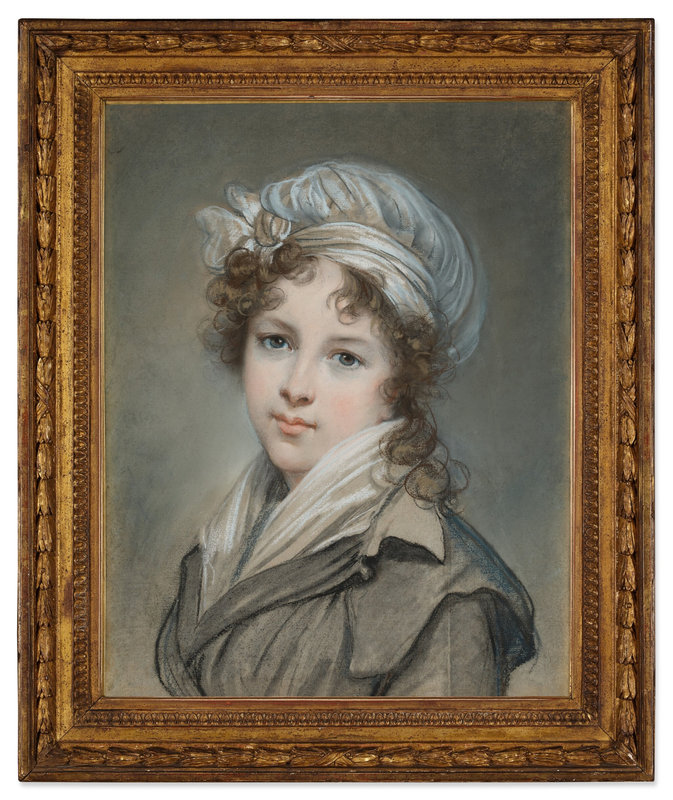

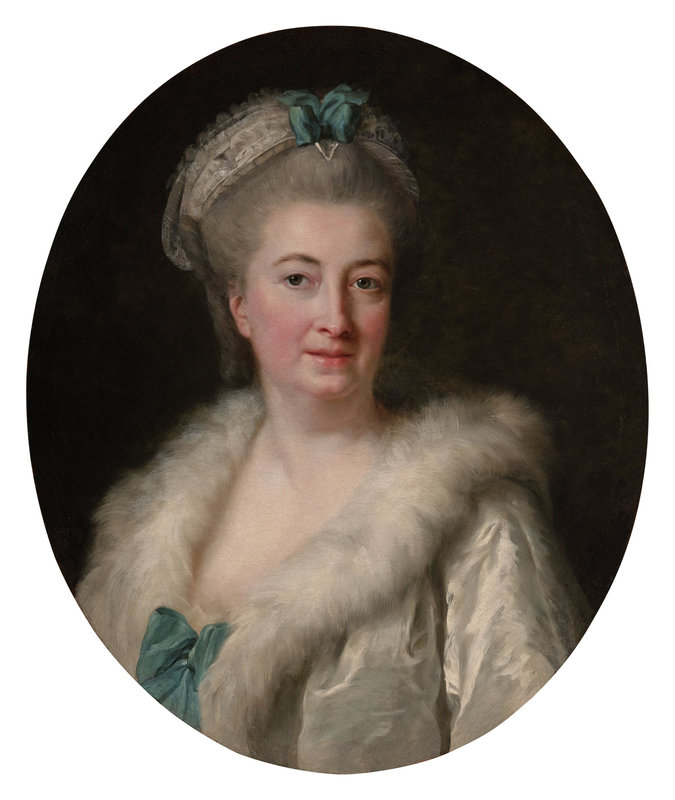

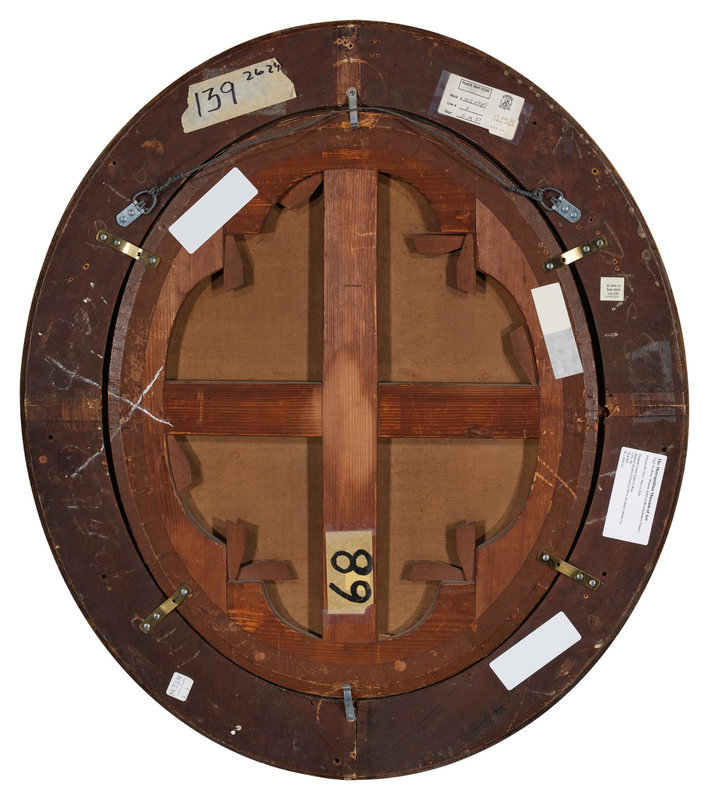
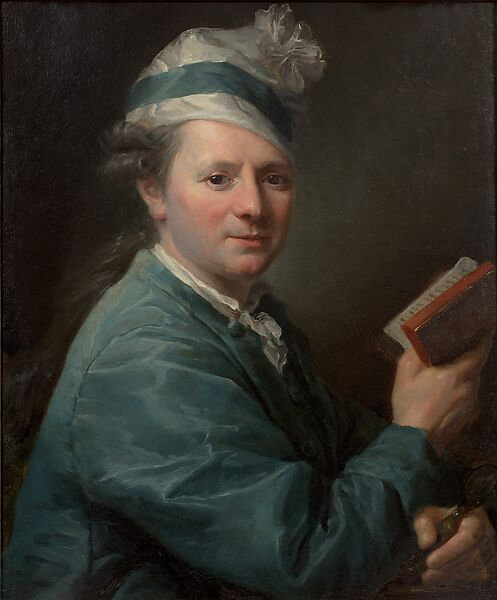
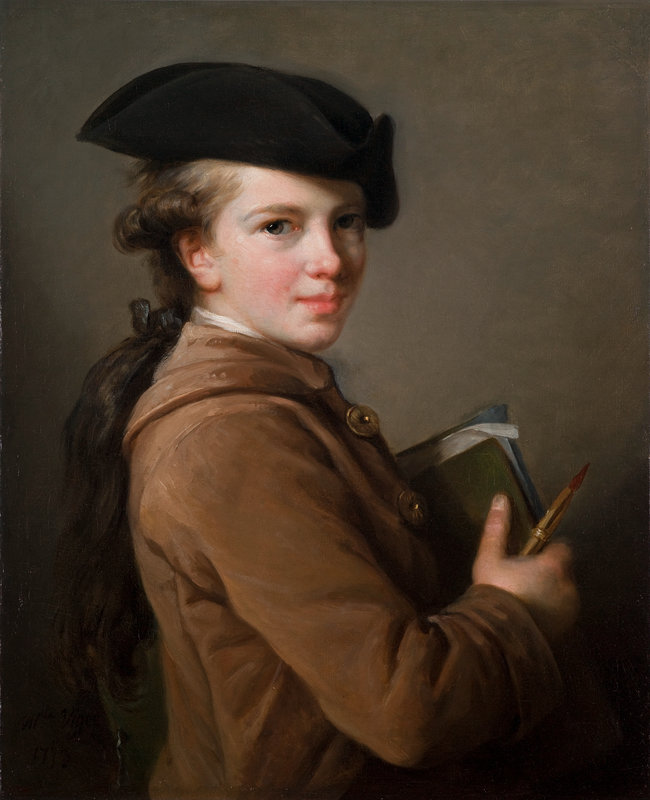
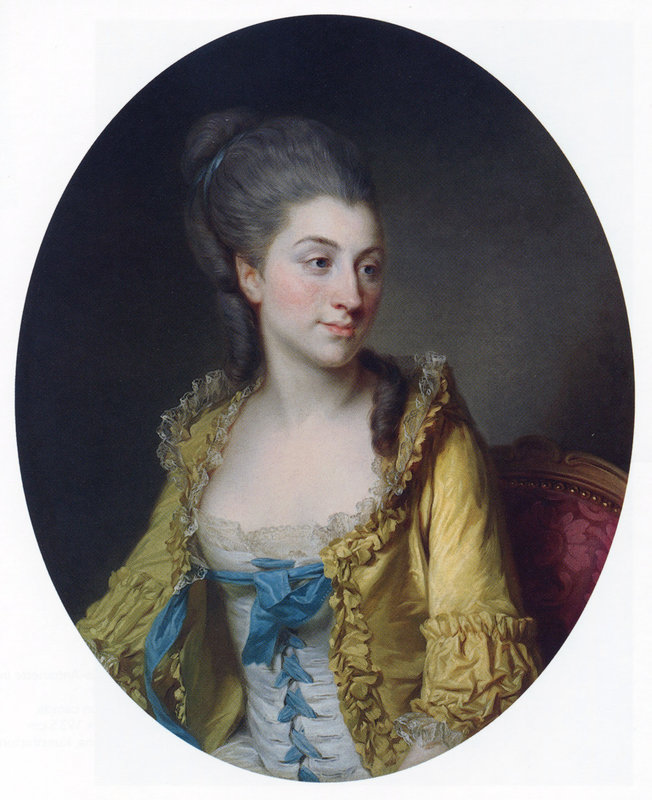
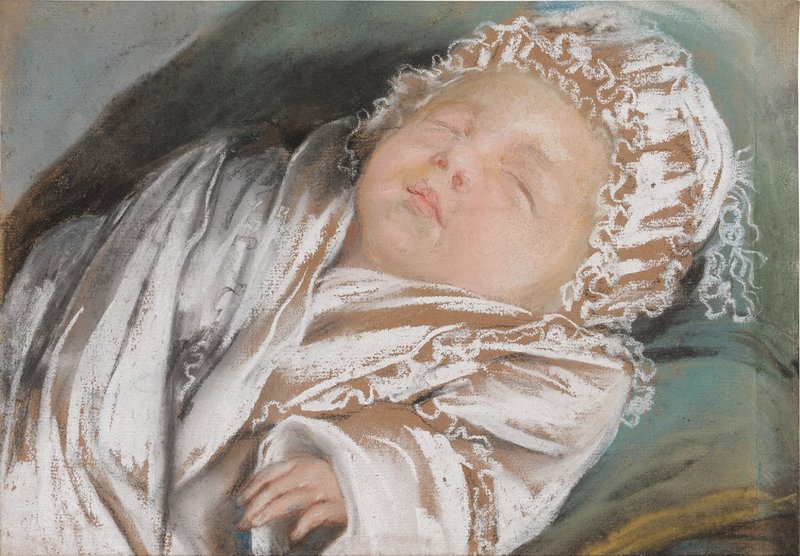


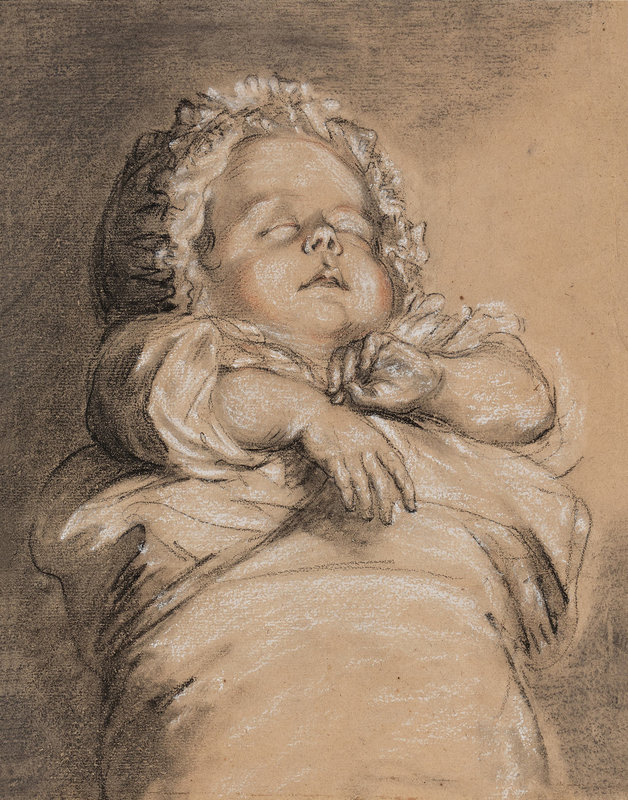

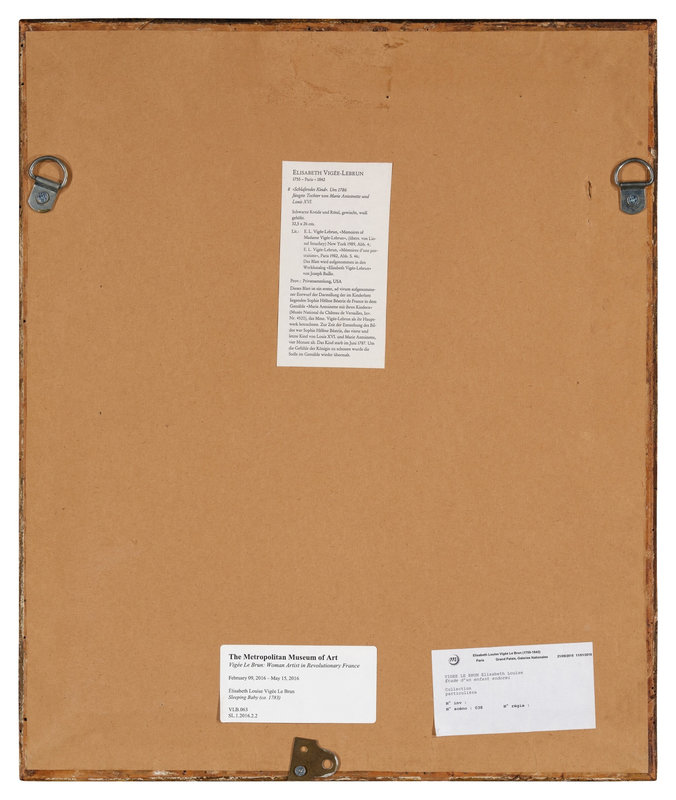
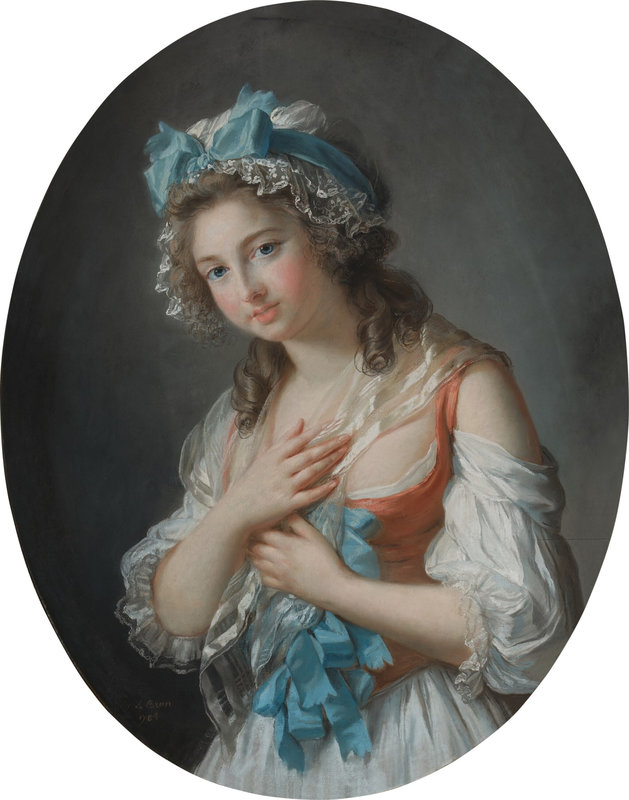
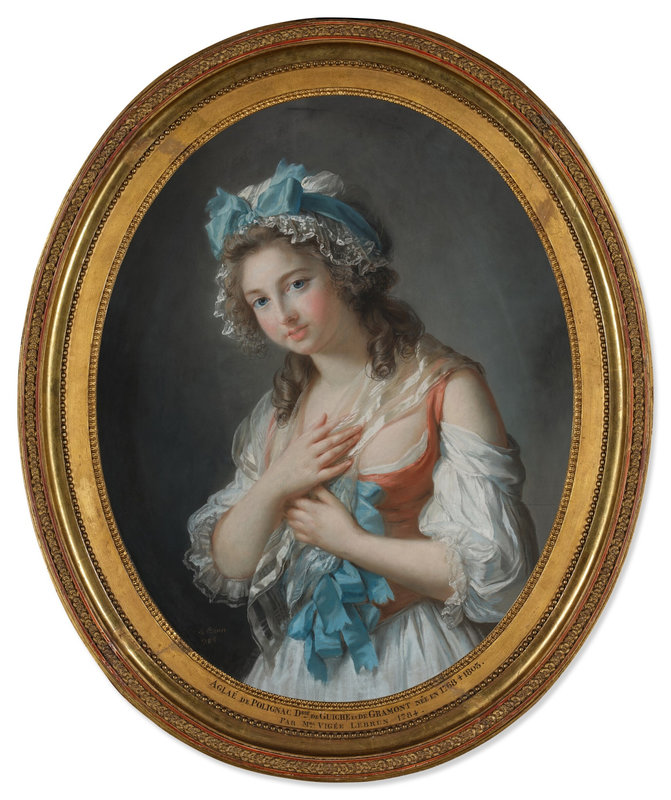

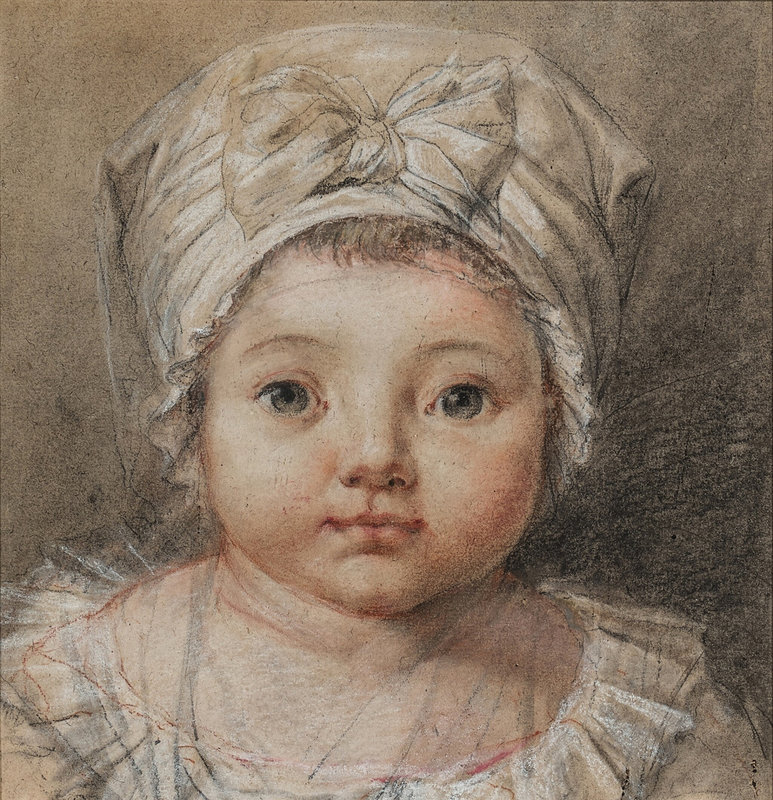
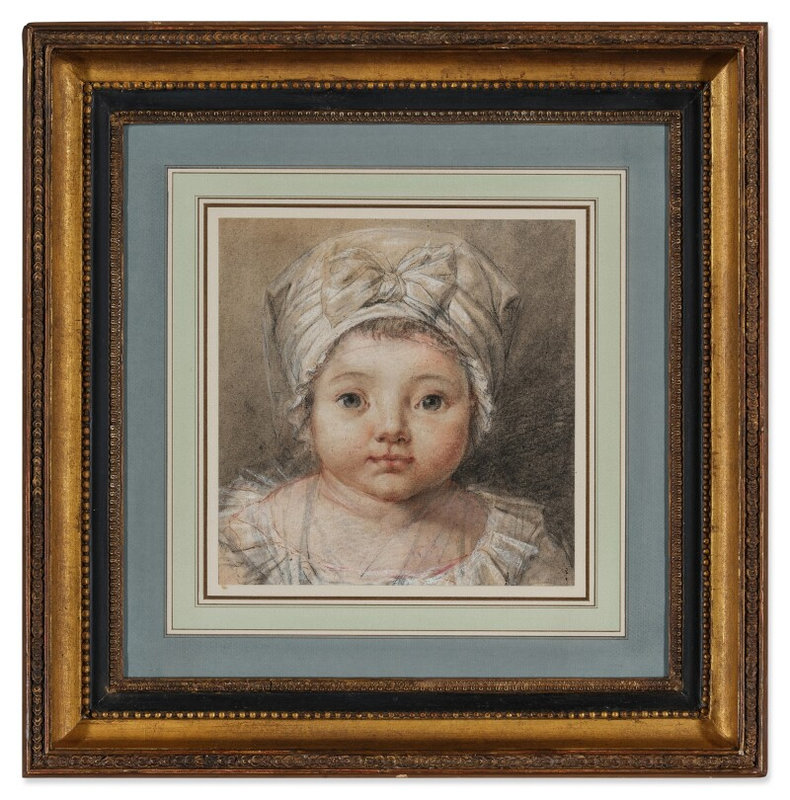
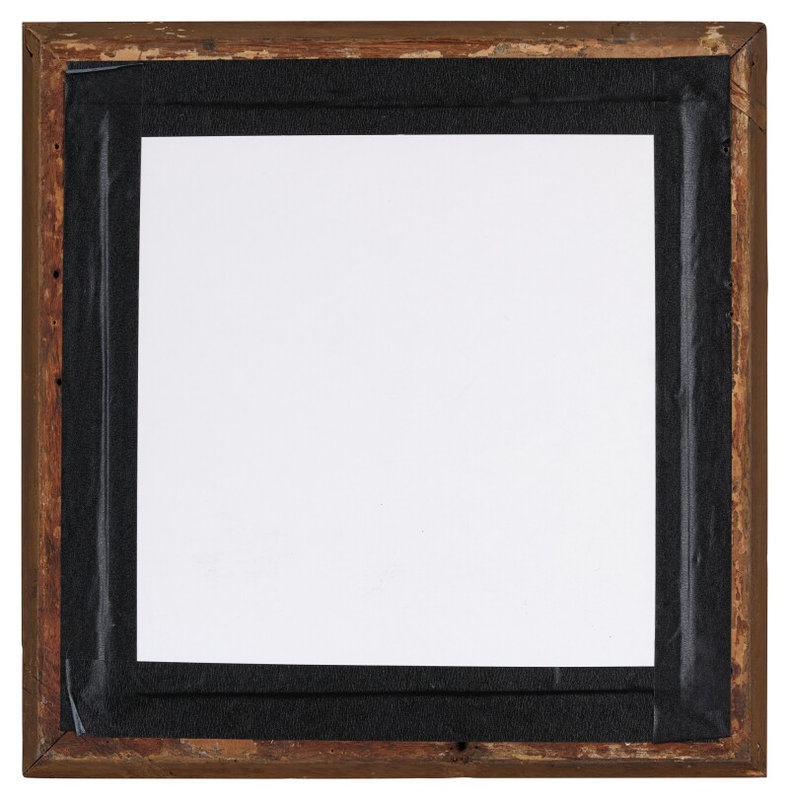




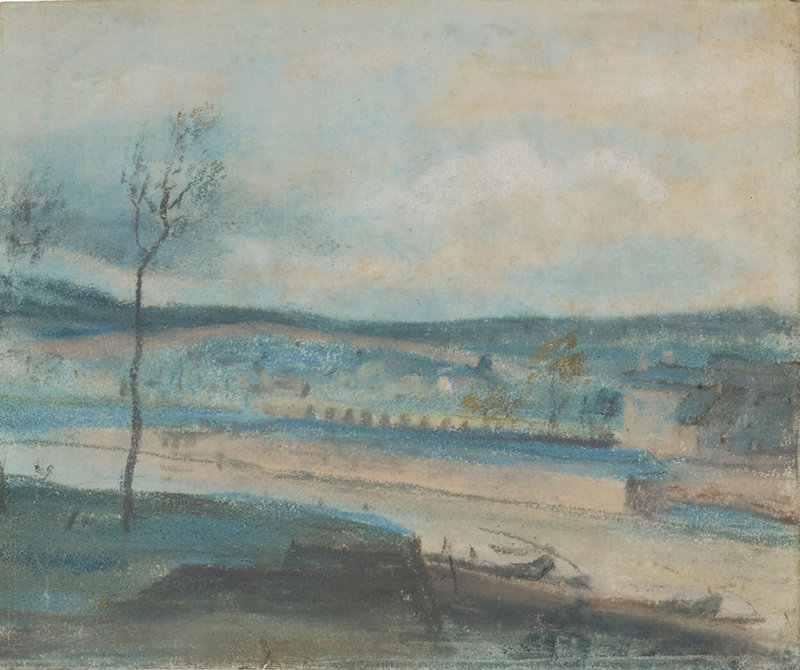
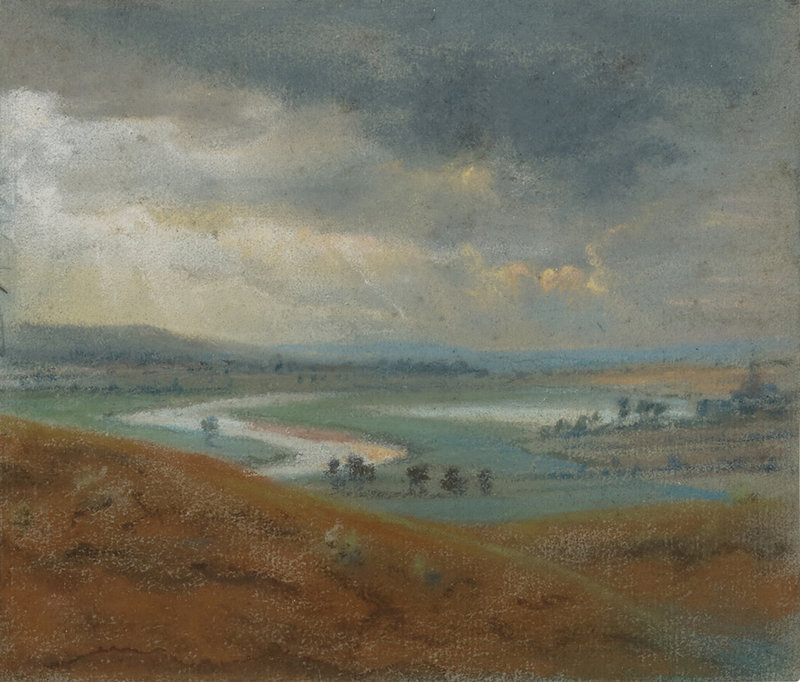
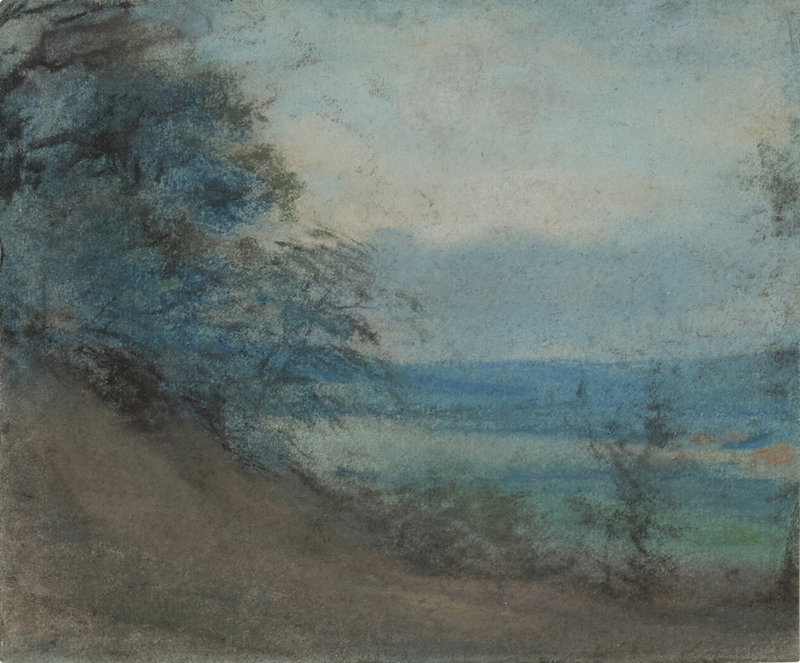
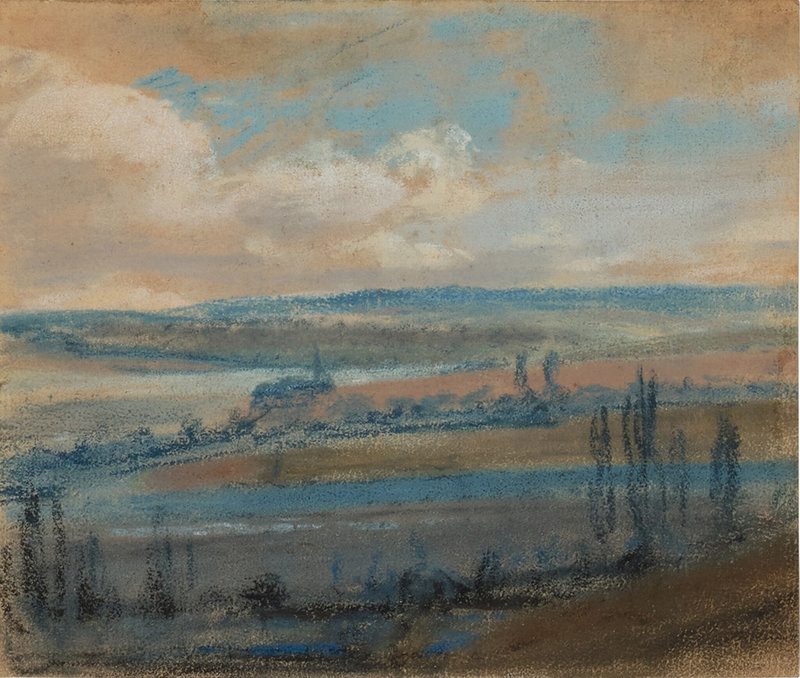
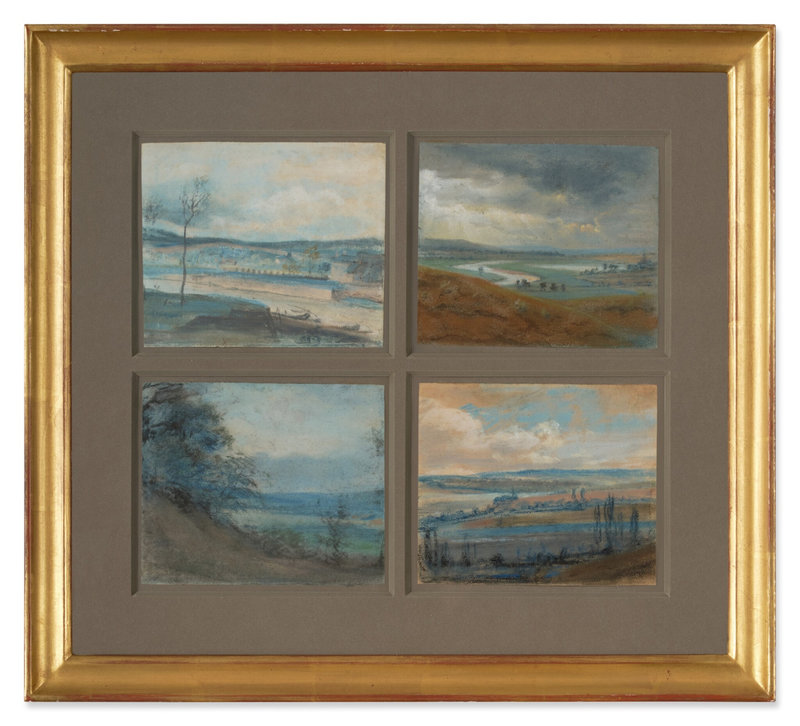








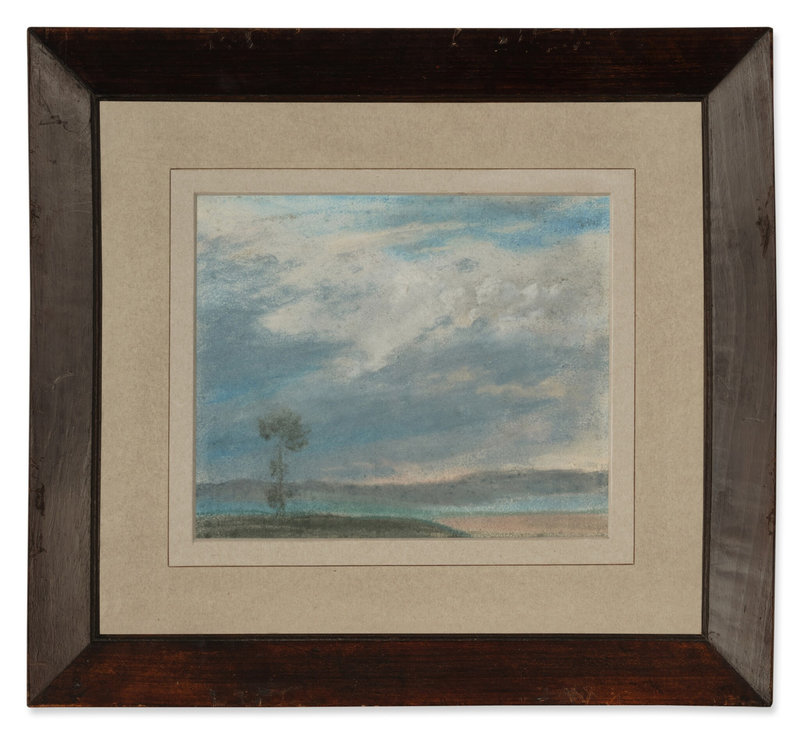
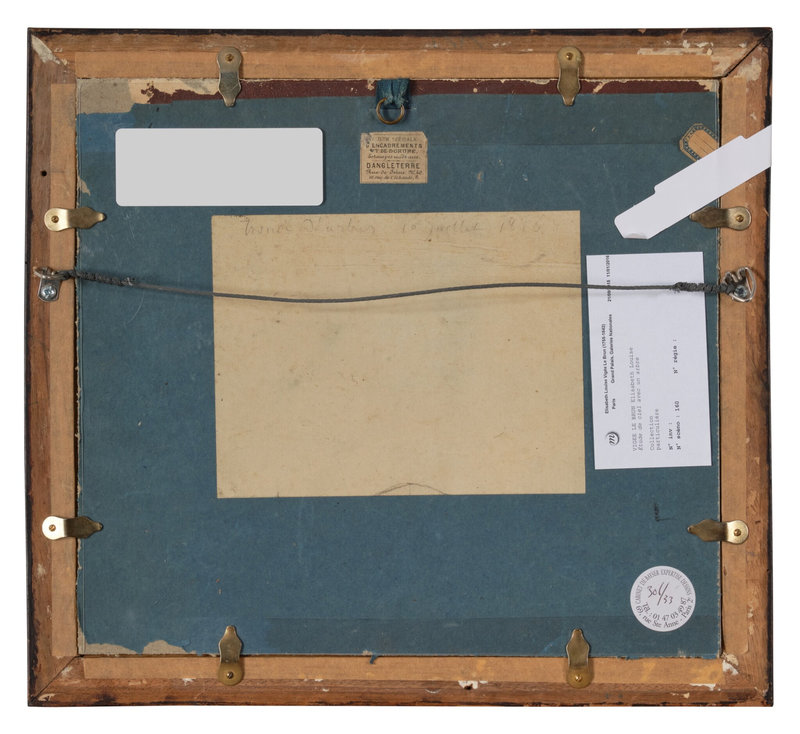
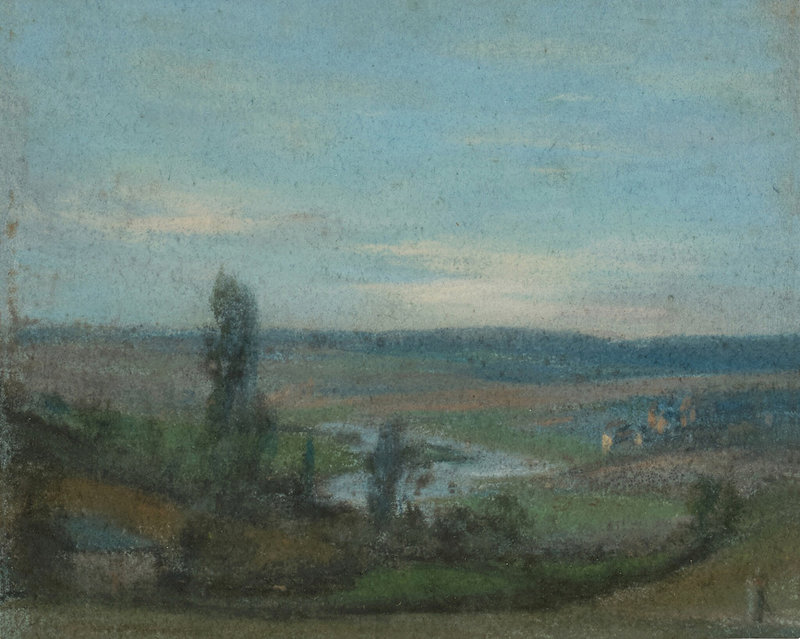
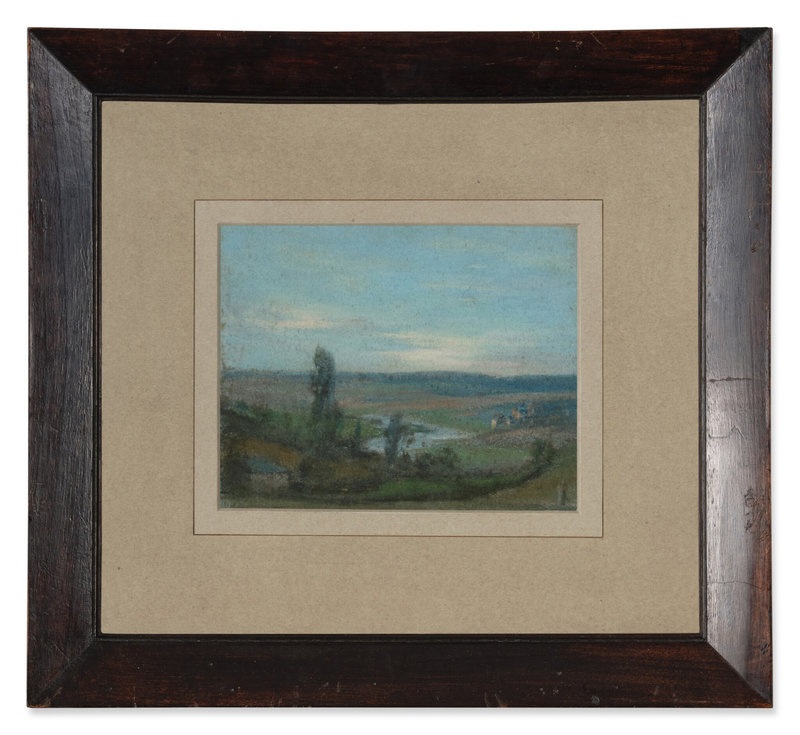



/image%2F1371349%2F20240512%2Fob_e83482_telechargement-14.jpg)
/image%2F1371349%2F20240512%2Fob_1b86bd_telechargement-12.jpg)
/image%2F1371349%2F20240512%2Fob_734fc0_telechargement-11.jpg)
/image%2F1371349%2F20240512%2Fob_2e1ec7_telechargement-7.jpg)